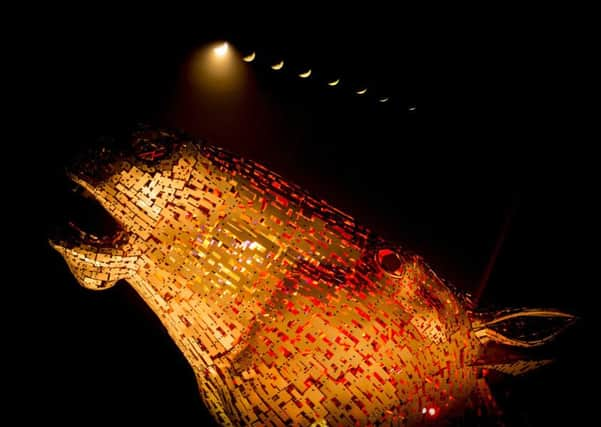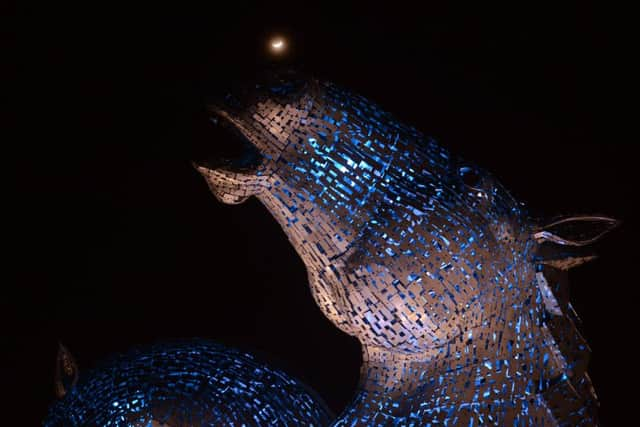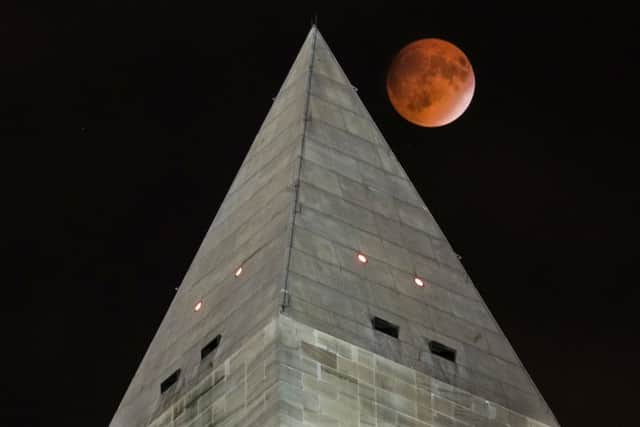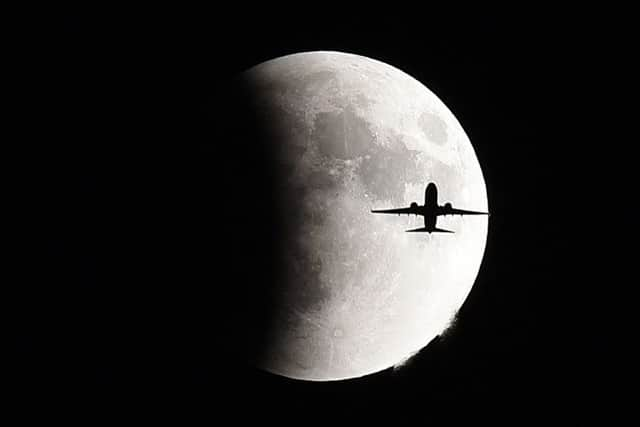Red supermoon lights up Scotland’s Kelpies


Until yesterday the phenomenon was last observed more than 30 years ago and will not happen again before 2033.
The dramatic spectacle was visible in clear skies above Western Europe, West Africa and the Americas.
Advertisement
Hide AdAdvertisement
Hide AdThe eerie light created during the eclipse, which happened while the moon was at it closest point to earth, delighted amateur astronomers and photographers.


Others fear the event is a harbinger of doom. Some religious groups and astrologers believe it is a sign that the end of the world is approaching.
The spectacle began to unfold from 1:10am, with the “total” phase – when the moon is completely in shadow – lasting from 3:11am to 4:24am. It continued until the moon emerged from the earth’s shadow at 6:24am.
When the moon is at perigee, its shortest distance from the earth, it is 226,000 miles away. This means it appears 14 per cent larger and 30 per cent brighter than when it is at its furthermost point, known as the apogee.
The last time the positioning coincided with a lunar eclipse, when the moon is obscured by the earth’s shadow, was in 1982.


During a lunar eclipse the moon turns a deep rusty red, due to sunlight being scattered by the earth’s atmosphere.
Those who stayed up to see the latest one were treated to “quite an unusual sight”, according to Society for Popular Astronomy vice-president Robin Scagell.
Unlike with a solar eclipse, a lunar eclipse is safe to observe through binoculars or a small telescope.
Advertisement
Hide AdAdvertisement
Hide AdMany believe this eclipse was significant as it marks the completion of an unusual line-up of four total eclipses at six-monthly intervals known as a tetrad.


Through the ages, so-called “blood moons” have been viewed as ill omens by superstitious people. Texan pastor and author John Hagee says this has only happened three times in the past 500 years, and claims it is likely to herald a “hugely significant” world event.
Dozens of amateur photographers posted images on social media, although those taking pictures on their phones were mostly disappointed.
Many images captured the coloured moon over internationally renowned landmarks, including the Empire State Building in New York and the Space Needle in Seattle.
Scotland’s Kelpies statues, near Falkirk, were also captured bathed in the unusually warm glow of the moonlight.
Good weather conditions across most parts of the country meant spectators on the UK were able to enjoy a good view of the eclipse.
Sophie McAteer, a student from Bellshill in Lanarkshire, got out of bed at 2:30am to witness the spectacle.
She said: “I was born during a lunar eclipse but this was my first chance to actually see one so it was amazing – absolutely out of this world.”
Advertisement
Hide AdAdvertisement
Hide AdLucy Carter, from London tweeted: “I saw it! And it was amazing! Trees blocking final moments of the eclipse now in SE26 so back to bed then.”
Aislinn Pilia said: “London, a clear starry night and a gorgeous supermoon worth getting up for but now going back to bed.”